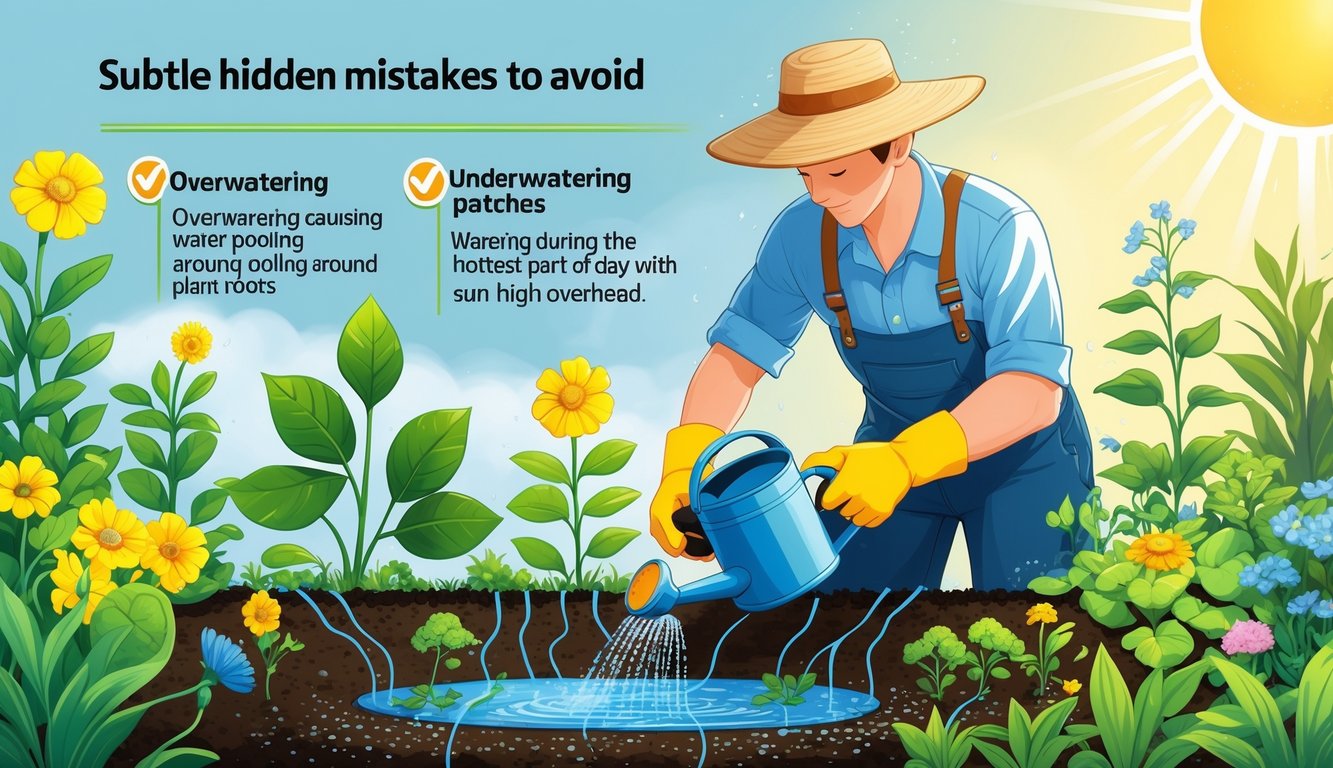
Water Quality Matters
You know what’s wild? We all obsess over watering schedules, but half the time, water quality messes up the plants before anything else. My neighbor’s sprinkler waters the sidewalk more than his petunias, and I’m pretty sure my tap water’s sabotaging my basil. Is it just me?
Dealing With Hard Water and Its Effects
Those chalky rings on my watering can? Classic hard water. I ignored them for years. Turns out, calcium and magnesium build up and basically choke the roots. Succulents get weird spots, tomatoes act dramatic, basil just gives up. I asked an extension agent once—apparently, hard water raises soil pH and blocks iron. No one at the nursery mentioned that.
Filters help, but who’s dragging filtered water to thirty pots? Rainwater catchment is fun until mosquitoes move in (vinegar works, you’re welcome). Honestly, a cheap hose filter did more than I expected. If your plants look sad or your pots get crusty, check your water report. Not paranoia—just practical. Hard water’s sneaky.
Making the Most of Available Water Sources
Collecting rainwater’s become my weird summer hobby. It’s free, plants love it, and yeah, sometimes the barrel gets gross. Drought warnings make it feel less like a chore and more like “why didn’t I do this years ago?” My water bill’s happier, too.
Graywater? I always check for soap now—one slip-up and my hydrangeas had brown tips for a month. Not my finest hour. Local laws are wishy-washy, but if you’re careful, shower or dishwater (no bleach, no harsh soap) can stretch your water stash when things get desperate. Here’s my personal cheat sheet:
| Water Source | Safe For Edibles? | Odd Results Seen |
|---|---|---|
| Rainwater | Yes | Algae if barrel open |
| Tap (Soft) | Yes | None if chlorine dissipates |
| Tap (Hard) | Maybe | Leaf spotting, white residue |
| Graywater | Sometimes | Brown tips if soapy |
Funny how nobody talks about this stuff until you’re out at dawn, coffee in hand, swapping stories with the only other person awake.
Frequently Asked Questions
What’s still baffling is how a tiny mistake with timing or technique—stuff pros pull off without thinking—can wreck your whole summer watering routine. And no matter how long you’ve been at it, you’ll mess up again if you stop paying attention.
How often should I water my plants during the peak of summer to prevent overwatering?
Everyone acts like daily soaking is the answer, but honestly, I’ve watched old-timers poke their fingers in the dirt and just…wait. Sometimes they only water every third day, and their tomatoes are fine. Overwatering just drowns the roots, even if the top feels dry. Missouri Botanical Garden says so, and I believe them. Hydrangeas? You’d think they need more, but begonia people swear by less during heat waves. Who’s right? No idea.
Can you share some professional tips on recognizing the signs of both underwatering and overwatering?
Wilted leaves—classic, but annoyingly vague. Both thirsty and drowning plants look sad. I once kept watering my ferns, but the roots were mush, not dry. Supposedly, yellow, soft leaves mean too much water; crispy edges and limp stems mean too little. Unless it’s a heatwave, then all bets are off. Sometimes I just yank the plant out and sniff the roots. Overwatered ones stink. That’s science, right?
What’s the best time of day to water plants in summer, and why does it matter?
I used to water at noon—total waste. Most of it evaporates. Megan Foster (she’s legit) and The Spruce both say morning’s best. Moisture sinks in, leaves dry off, plants don’t fry. And yet, my cousin’s lilies survived afternoon soakings last year. So, who knows? Early is safest, I guess.
Are there any specific watering techniques pros use to ensure deep root hydration without waste?
Drip irrigation isn’t just for show-offs. The pros bury lines under mulch, let water seep slow and deep. I’ve seen people use a screwdriver to check depth—if it slides in easy, roots are wet. Deep, occasional watering always beats quick spritzes. Unless you want lazy roots. I don’t.
Could improper soil drainage be affecting my watering routine, and how can I fix it?
Took me ages to realize my rosemary didn’t hate me—it just needed drainage. Puddles? Bad sign. Roots want air, not a swamp. Add sand, perlite, gritty mixes, or just drill more holes in pots. I saw someone jam drinking straws through the soil for airflow. Looked weird, but hey, it worked.
What tools do gardening experts recommend to maintain optimal soil moisture levels?
Alright, so—everyone says just stick your finger in the dirt, but honestly, who wants mud under their nails every day? Not me. I caved and bought a soil moisture meter. Cheap little gadget, probably the only thing in my shed that doesn’t lie to me. I mean, how do you really know if the roots are drowning or dying of thirst? Some folks—like, actual old-timers, not just random internet people—swear by these buried terracotta pots, ollas or whatever, that just ooze water out slowly. Sounds like witchcraft but apparently it works. Oh, and there’s this one guy who dumps pine straw mulch on his tomatoes. Says it keeps everything perfectly balanced. I don’t know, maybe he’s onto something, maybe he’s just bored. Sometimes I end up lugging a bucket around the yard just in case, but honestly, if I’m losing sleep over wilted basil, I just grab my moisture meter and hope for the best.